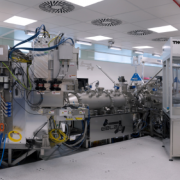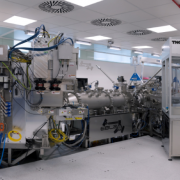Transistor capacity has always put the kibosh on semiconductor chip performance.
Chipmakers have for decades drained investment into a revolutionary Japanese technique to stretch the limits of physics and cram more transistors onto pieces of silicon.
A secretive Japanese company that mastered the skill of manipulating light for applications is about to go mainstream with cutting-edge technology.
Ushio Inc. achieved the once thought impossible task of refining powerful, ultra-precise lights needed to test chip designs based on extreme ultraviolet lithography (EUV), a process through which the next generation of semiconductors will be made.
The milestone means that the Japanese company will become a prominent player in future chipmaking and the technology that harnesses it.
“The infrastructure is now mostly ready,” said CEO Koji Naito in an interview.
Testing equipment was primarily holding back extreme ultraviolet lithography (EUV), but with that hold-up dealt with, production efficiency and yields can finally go up setting the stage for electronic manufacturers with the possibilities of producing substantially better consumer products.
The Tokyo-based company developed a light source for equipment used to test what are known as masks: glass squares slightly bigger than a CD case that act as a stencil for chip designs. These templates must be picture-perfect, even an iota of error in one of them can render every chip in a large batch unfit.
That’s where Ushio seamlessly slots in.
Its technology operates lasers to vaporize liquid tin into plasma and produce light closer in wavelength to X-rays than the spectrum visible to the human eye.
That light aids chipmakers in detecting errors in the product.
This process takes a room-sized machine that looks like a sci-fi death ray and requires a phalanx of workers to operate.
After 15 years of industrious development, the EUV business will generate profits next year.
Only Intel Corp. (INTC), Samsung Electronics Co., and Taiwan Semiconductor Manufacturing Co. (TSM) desire to go smaller than the 7-nanometer processes that are the current status quo of central processing unit (CPU) design.
The focus on niche areas and creating things that others can’t is set to pay dividends for Ushio.
Ushio is poised to seize control of the market for light sources used in the testing of patterned EUV masks, there are several boutique tech companies in the Tokyo area that are incessantly focused on high-precision manufacturing.
Ushio dominates lithography lamps used to make liquid crystal displays with 80% market share and controls 95% of the supply of excimer lamps used in silicon wafer cleaning.
Their secret sauce is balancing mass production with craftsmanship.
Materials like quartz glass are arduous to work with and possess peculiar thermal expansion properties from metals like the molybdenum in which they are housed.
I know this stuff seems like out of the realm of science fiction, but Japanese-specialized firms have always been at the vanguard of the semiconductor technology and that is still the same today.
Ushio was established in 1964, and it was the first Japanese company to develop and produce halogen lamps.
Starting from 1973, fishermen used its lights to catch squid in Tokyo Bay.
The firm has succeeded in more than tripling its sales over the past 25 years.
The company is now venturing into the use of sodium lamps to nurture plants and using ultraviolet light calibrated to such a precise wavelength to kill bacteria without damaging human skin.





